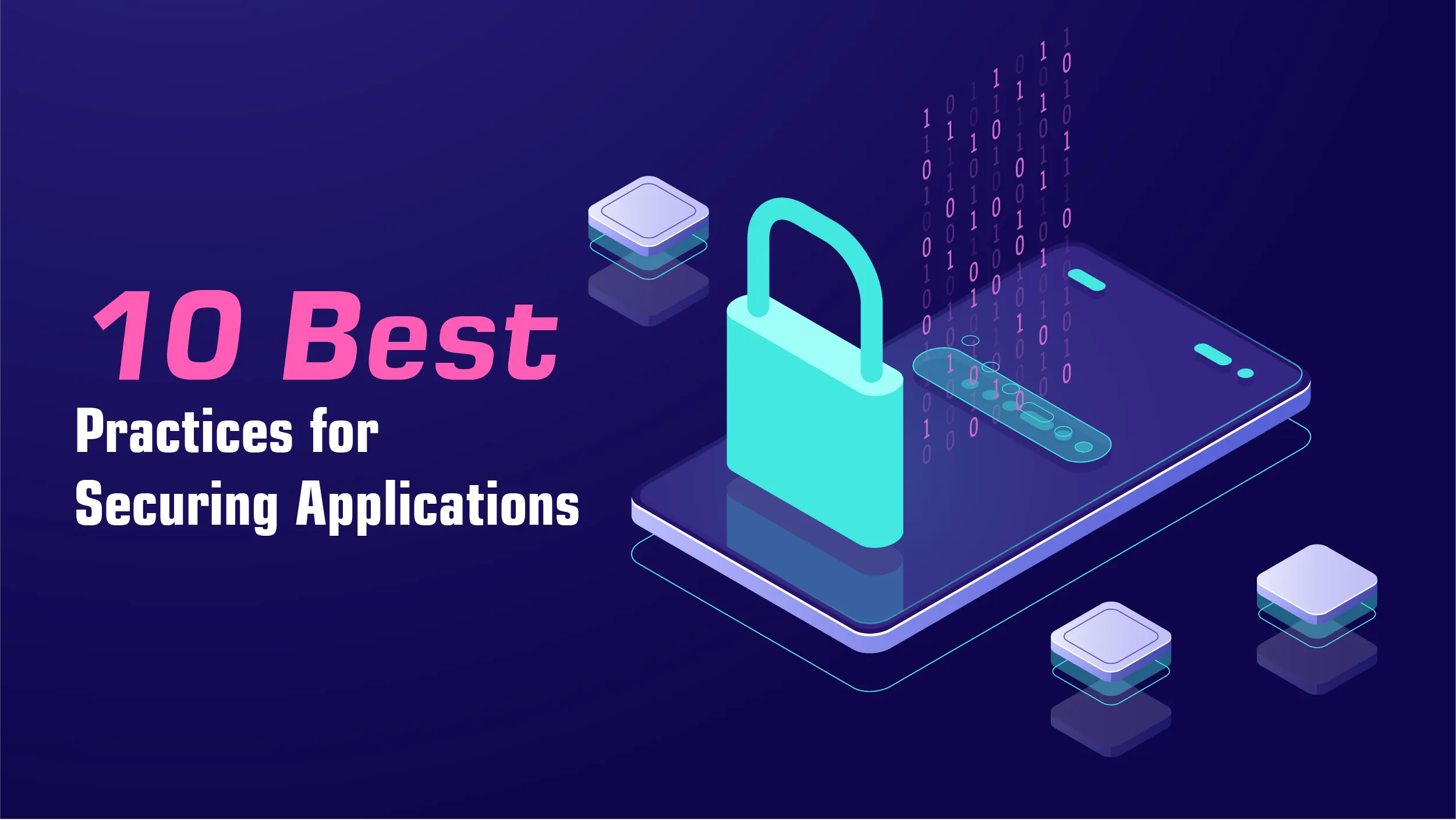Organizations are becoming more concerned about the potential of cyberattacks and data breaches in today’s digital environment. Ransomware attacks affected 72.7% of all enterprises worldwide in 2023. Moreover, over the following two years, it is anticipated that the cost of cybercrime damage will increase by 15% annually, reaching $10.5 trillion by 2025. Strong application security measures are desperately needed, as seen by the possible consequences of these breaches, which include lost money, harm to one’s reputation, and betrayal of consumer trust.
App security is critical in reducing these risks by giving businesses the instruments and procedures required to secure their apps and private information. The integrity and confidentiality of applications and data handled by businesses can be ensured by implementing strong application security mechanisms that harden systems, identify vulnerabilities, and actively defend against malicious assaults. Let’s learn more about it.
What Is Application Security?
Application security refers to the protective measures put in place to safeguard an application’s data and code from theft or hijacking. It includes security considerations during the development and design phases, as well as systems and strategies to protect apps after they are deployed.
Application security can involve hardware, software, and procedures to identify and minimize security vulnerabilities. For instance, a router that hides a computer’s IP address from the Internet is a form of hardware application security. On the software side, measures like application firewalls define and enforce permitted activities. Procedures may include routines such as regular security testing to ensure ongoing protection.
Also Read: What is Identity Orchestration? Benefits, Tools
Why Is Application Security Important?
Since modern apps are regularly made available across several networks and connected to the cloud, they are more vulnerable to security flaws and threats. Thus the need to ensure network and app security is becoming more and more pressing. One reason for this could be that programs are now the target of hacker attacks more frequently than they were in the past. By locating vulnerabilities at the application level, application security testing can assist in thwarting these assaults.
What Are the Common Application Security Threats?
 Broken Access Control: This threat arises when there are gaps in a system’s access controls, allowing unauthorized users to access sensitive data or resources.
Broken Access Control: This threat arises when there are gaps in a system’s access controls, allowing unauthorized users to access sensitive data or resources.- Injection: Injection vulnerabilities allow attackers to send malicious data to a web application interpreter, potentially executing unauthorized commands on the server. SQL injection is a common example.
- Cross-Site Scripting (XSS): XSS happens when attackers inject malicious scripts into web pages viewed by users, enabling them to steal sensitive information or perform unauthorized actions on behalf of the user.
- Insecure Design: Insecure design refers to risks related to application design flaws. Adopting secure design practices is crucial to mitigate this threat.
- Security Misconfigurations: These occur when there is a lack of security hardening across the application stack, leading to potential non-compliance with data privacy regulations and exploitable vulnerabilities.
- Using Components with Known Vulnerabilities: Developers often use libraries and frameworks in their applications, but attackers can exploit known vulnerabilities in these components to bypass application defenses.
- Insufficient Cryptography: Poor use of cryptography can result in data breaches and unauthorized access to sensitive information. Implementing strong encryption algorithms and secure cryptographic practices is essential.
- Data Leakage: This occurs when sensitive information is disclosed without authorization, often due to insecure storage, insecure transmission, or vulnerabilities in the application’s code.
- Insufficient Authentication and Authorization: Weak authentication mechanisms and improper authorization controls can let unauthorized users access sensitive data or perform unauthorized actions.
- Malware: Malware is a significant threat to mobile applications. Cybercriminals exploit vulnerabilities in mobile apps to access private information and damage devices.
10 Best Practices for Securing Applications
 Securing applications is essential to protecting sensitive data and maintaining user trust. Here are some best practices for app security:
Securing applications is essential to protecting sensitive data and maintaining user trust. Here are some best practices for app security:
- Implement Access Controls: Ensure proper access controls are in place to restrict unauthorized access to sensitive data or resources. This includes using strong authentication mechanisms, role-based access control, and least privilege principles.
- Regularly Update and Patch: Keep applications and underlying software frameworks updated with the latest identity security patches. Regularly applying updates helps address known vulnerabilities and protect against potential exploits.
- Secure Coding Practices: To reduce the possibility of creating vulnerabilities during development, adhere to secure coding techniques. This involves preventing popular attack vectors including injection and cross-site scripting (XSS) through input validation, output encoding, and appropriate error handling.
- Encrypt Data: Use strong encryption algorithms to protect sensitive data at rest and in transit. Implement encryption protocols such as HTTPS and TLS for secure communication between clients and servers.
- Implement Web Application Firewalls (WAF): Deploy a WAF to monitor and filter incoming and outgoing traffic to the application. WAFs can detect and block common web application attacks, such as SQL injection and XSS.
- Perform Regular Security Testing: Conduct regular security testing, including vulnerability assessments and penetration testing, to identify and address potential weaknesses in the application. This helps uncover vulnerabilities before attackers can exploit them.
- Secure Configuration Management: Ensure that the application and underlying infrastructure are configured securely. This includes disabling unnecessary services, removing default credentials, and following security best practices for server and database configurations.
- Implement Logging and Monitoring: Enable comprehensive logging and monitoring to detect and respond to security incidents promptly. Monitor application logs, network traffic, and system events to identify any suspicious activities or potential breaches.
- Educate and Train Personnel: Provide security awareness training to developers, administrators, and other personnel involved in application development and maintenance. Educate them about common security threats, best practices, and the importance of following secure coding guidelines.
- Implement a Secure Software Development Lifecycle (SDLC): Integrate security into the software development process from the early stages. Incorporate security reviews, code analysis, and testing at each phase of the SDLC to proactively identify and address security issues.
Concluding On The Future Of Application Security
Application security is changing in the future to take on new issues and make use of new technology. This includes creating a culture shift where security and IT teams collaborate throughout the development cycle, incorporating security into the development process, and extending the reach of app security to encompass low-code/no-code services, containers, and APIs. Making security an automated component of development will be made possible in large part by automation and DevSecOps approaches. To properly protect applications in the face of changing threat intelligence, there will be a change in the tools, attitude, and automation.

































